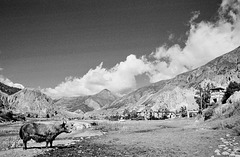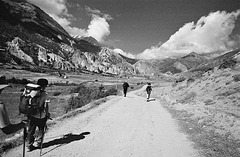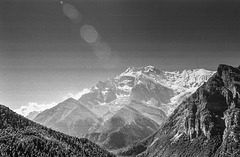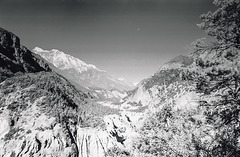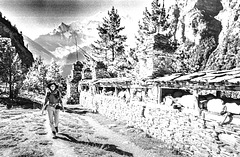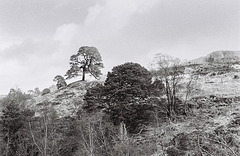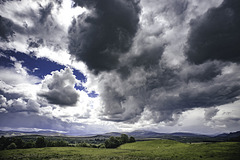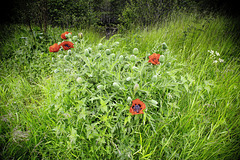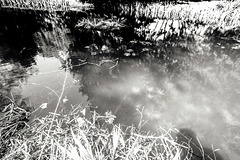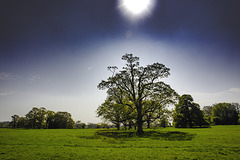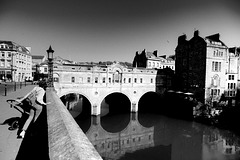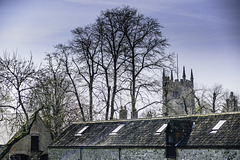m̌ ḫ's photos
Domestic yak
| |
|
|
03920010
| |
|
|
See a skull?
| |
|
|
|
Annapurna II sits apart from the main ridge of the Annapurna Massif, along with the shorter Annapurna IV. Its summit proper lies along a steep rock ridge, relatively free of snow towards its highest point, which drops in altitude to run west to the summit of the smaller peak. The South Face is a large pyramidal wall only interrupted by the central spur, while the North Face is more complex, with steep walls cascading between ice fields near the summit and base of the mountain. To the northwest, a large hanging glacier occupies the flank between it and Annapurna IV, while the Northeastern wall has a distinctive, recurrent series of cornices and rock bands resembling a human face or skull, visible in the above photograph.
03920001
| |
|
Around mani wall
| |
|
|
|
000042
| |
|
The Circus, Bath
| |
|
|
|
The Circus, originally called King's Circus, was designed by the architect John Wood, the Elder. Convinced that Bath had been the principal centre of Druid activity in Britain, Wood surveyed Stonehenge, which has a diameter of 325 feet (99 m) at the outer earth bank, and designed the Circus with a 318 feet (97 m) diameter to mimic this.
Wood died less than three months after the first stone was laid; his son, John Wood, the Younger, completed the project to his father's design. The initial leases for the south west segment were granted in 1755–1767, for the south east segment in 1762–1766, and for the north segment in 1764–1766.
The Circus was part of John Wood the Elder's grand vision to recreate a classical Palladian architectural landscape for the city. Other projects included nearby Queen Square and the never-built Forum. The culmination of Wood's career, the Circus is considered his masterpiece.
--
Elliot, Kirsten (2004). The Myth-Maker: John Wood 1704–1754
Gadd, David, Georgian Summer, Countryside Books, updated edition 1987
Windows vary in size, and details by Classical ord…
| |
|
|
|
Three Classical orders (Greek Doric, Roman/Composite and Corinthian) are used, one above the other, in the elegant curved facades. The frieze of the Doric entablature is decorated with alternating triglyphs and 525 pictorial emblems, including serpents, nautical symbols, devices representing the arts and sciences, and masonic symbols. The parapet is adorned with stone acorn finials.
en.wikipedia.org/wiki/The_Circus,_Bath
When the clouds are within grasp of a hand
| |
|
|
|
The Cairngorm Mountains in the Scottish Highlands are not especially tall, topping out at about 1,300 meters. But their modest heights boast a fierce reputation: Scotland is one of the top destinations in the world for winter climbing on mixed rock and ice terrain, and the region has produced some of the boldest, strongest and technically proficient mountaineers in history, including Hamish MacInnes of Glencoe, who invented the first metal ice axe, and Dave MacLeod, who established some of the most technically challenging climbing routes in Scotland.
Formed from a granite pluton, the Cairngorms sit atop a glacially carved plateau that has long presented a barrier to travel through the region. To this day, the Cairngorms are bisected by a network of ancient footpaths, but no roads. One of the most famous and dramatic routes through the Cairngorms runs through the Lairig Ghru, a deep, narrow, 43-kilometer-long glacially carved canyon that has served as a major trade and migration route from Aviemore to Braemar for hundreds or perhaps thousands of years.
Exploring the Cairngorms on foot is not for the faint-hearted or tender-footed. The year-round arctic-like weather is dangerously unpredictable and the terrain is intensely rugged. But in spite of the dangers — or perhaps because of them — the Cairngorms have inspired mountain men and women to climb their glacially sculpted granitic slopes since at least the 16th century, when the first ascents of major peaks were recorded.
You don’t have to be a world-class mountaineer to experience the Cairngorms, however. The region is preserved within the bounds of Cairngorms National Park — the largest park in the British Isles — which maintains hundreds of kilometers of hiking paths suitable for all skill levels. The park also offers skiing, mountain and road biking, horseback riding, fishing and golfing.
Scotland isn’t a big place, but it boasts some of the most diverse and inspiring geology found anywhere in the world. A dramatically scenic, globe-trotting landmass known for being the birthplace of geology and mountaineering, Scotland should be at the top of every geo-traveler’s list.
www.earthmagazine.org/article/travels-geology-inspiring-globe-trotting-rocks-scotland
Am Monadh Ruadh
| |
|
|
The Cairngorms National Park is hugely diverse; it is a living, working landscape from the wild high mountains, to the heather moorlands and peatlands, to the magnificent forests, the farms and crofts, and the wetlands and rivers which wind through the flood plains.
The Caledonian Forest takes its name from the Romans who called Scotland ‘Caledonia’ meaning wooded heights and covered much of the Highlands and what we know as the Cairngorms National Park today. The Scots pine we see now are directly descended from these first pines, that arrived in Scotland following the Late Glacial period around 7,000 BCE and formed the westernmost outpost of the Boreal Forest in Europe.
It is estimated to have reached a maximum coverage of 1.5 million hectares around 5,000 BCE. Then as the climate became wetter and windier the forest reduced significantly by 2,000 BCE and from this time onwards human intervention reduced the forest to its current extent.
Today the Caledonian Forest exists in 35 remnants across the Highlands of Scotland, the only climatic region in the UK suitable to support it. These last remaining forests have had to adapt to the Scottish environment and as such are globally unique in their ecological characteristics and forms an unbroken 9,000 year chain of natural evolution.
Many species have flourished in the Caledonian Forest over the thousands of years. Prior to forest clearances in Neolithic times, you would have found beavers, wild boar, lynx, brown bears, grey wolves, elk and wild horses. These species are unfortunately extinct in the forests today, but are still home to some of the rarest wildlife in the UK; the mountain hare, pine marten, red deer, red fox, red squirrel, roe deer, Scottish wildcat, the capercaillie, crested tit and Scottish crossbill.
cairngorms.co.uk/discover-explore/landscapes-scenery/woodlands-forests
Field Poppy
What can you spot in a pond
| |
|
|
Midday
| |
|
|
|
Inside a Gothic Horror place
| |
|
|
|
Reflections in B/W
| |
|
|
|
The city of Bath in South West England was founded in the 1st century AD by the Romans who used the natural hot springs as a thermal spa. It became an important centre for the wool industry in the Middle Ages but in the 18th century under the reigns of George l, ll and III it developed into an elegant spa city, famed in literature and art.
The City of Bath is of Outstanding Universal Value for the following cultural attributes: The Roman remains, especially the Temple of Sulis Minerva and the baths complex (based around the hot springs at the heart of the Roman town of Aquae Sulis, which have remained at the heart of the City’s development ever since) are amongst the most famous and important Roman remains north of the Alps, and marked the beginning of Bath’s history as a spa town.
The Georgian city reflects the ambitions of John Wood Senior (1704-1754), Ralph Allen (1693-1764) and Richard “Beau” Nash (1674-1761) to make Bath into one of the most beautiful cities in Europe, with architecture and landscape combined harmoniously for the enjoyment of the spa town’s cure takers.
The Neo-classical style of the public buildings (such as the Assembly Rooms and the Pump Room) harmonises with the grandiose proportions of the monumental ensembles (such as Queen Square, Circus and Royal Crescent) and collectively reflects the ambitions, particularly social, of the spa city in the 18th century.
The individual Georgian buildings reflect the profound influence of Palladio (1508-1580) and their collective scale, style and the organisation of the spaces between buildings epitomises the success of architects such as the John Woods (elder 1704-1754, younger 1728-1782), Robert Adam (1728-1792), Thomas Baldwin (1750-1820) and John Palmer (1738-1817) in transposing Palladio’s ideas to the scale of a complete city, situated in a hollow in the hills and built to a picturesque landscape aestheticism creating a strong garden city feel, more akin to the 19th century garden cities than the 17th century Renaissance cities.
whc.unesco.org/en/list/428
Stones can tell stories
| |
|
|
Avebury henge and stone circles are one of the greatest marvels of prehistoric Britain. Built and much altered during the Neolithic period, roughly between 2850 BC and 2200 BC, the henge survives as a huge circular bank and ditch, encircling an area that includes part of Avebury village. Within the henge is the largest stone circle in Britain - originally of about 100 stones - which in turn encloses two smaller stone circles.
www.english-heritage.org.uk/visit/places/avebury
From the Spring series
| |
|
|
A very English scene
| |
|
|
|

